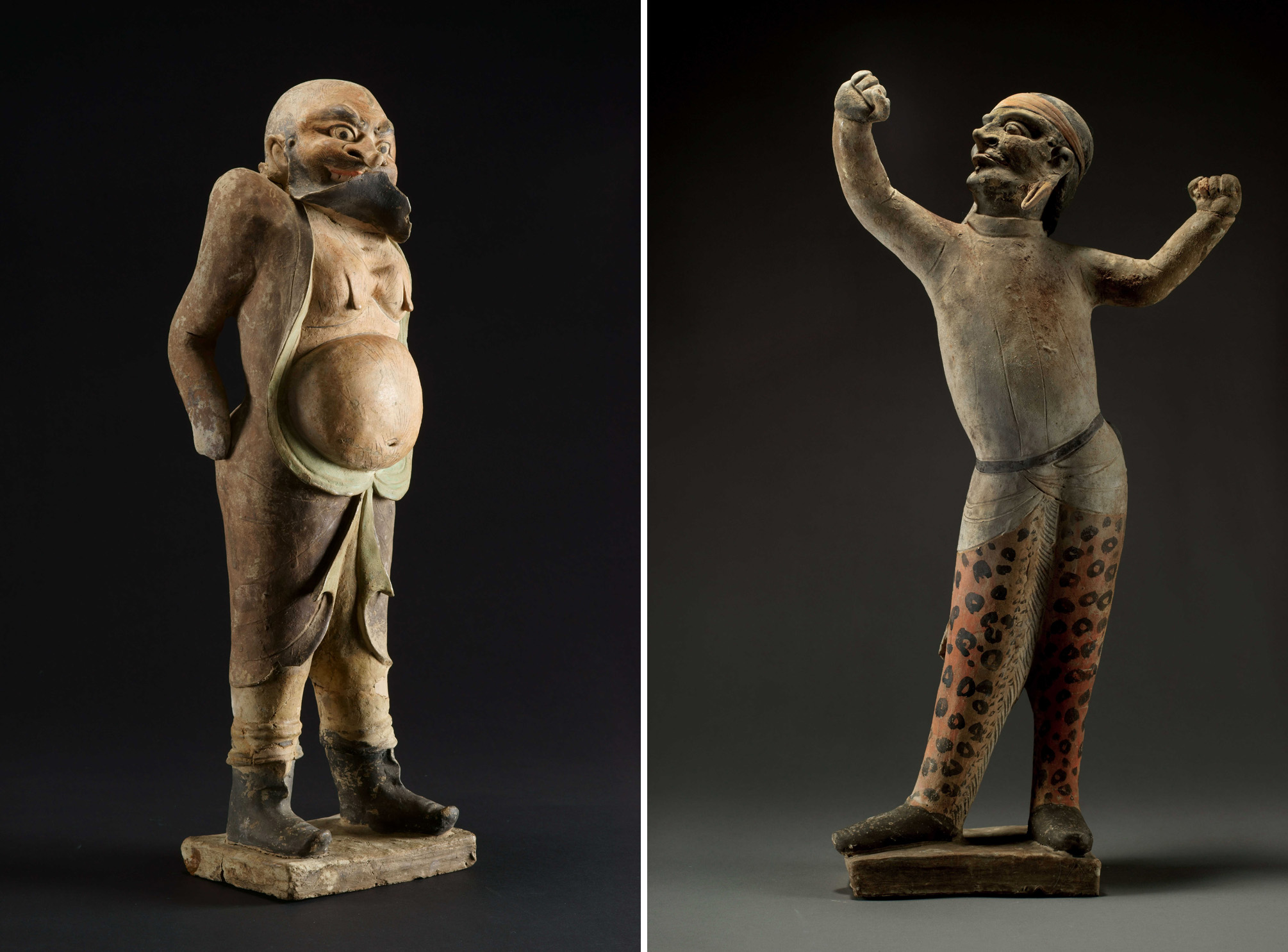The excavation of the tomb of the Tang Dynasty general Mu Tai (660-729, buried in 730) took place in Qingcheng County in China's Gansu Province in 2001. Unearthed were colorfully painted and realistically detailed small-scale sculptures of "foreign" peoples and their animals, such as horses and camels, which were used for transport and livelihood. These stand as counterpoints to the better known figural realism in bronzes of the earlier Warring States (475-221 B.C.) and Western Han (206 B.C.-A.D. 9) periods, and also the revered Terracotta Army made for the Chinese emperor, Qin Shi Huang (259-210 B.C.).
Tang Dynasty (618-907) China was cosmopolitan, prosperous and enjoyed dynamic cultural exchange with foreign and diverse peoples traveling the ancient mercantile Silk Road that connected East and West. The trappings of these exotic cultures became all the rage in the ancient Chinese capital of Chang'an (present-day Xi'an), to the degree that they were incorporated into the decorative burial programs of society's elites.
Around 60 yong (ceramic funerary tomb figures) of the hu ren (non-Han peoples of the Western regions of the Tang Dynasty) are being shown for the first time in Japan at The Museum of Oriental Ceramics Osaka in the exhibition "Tang Dynasty Tomb Figures of Hu People: Portraying the Multicultural Vigor on the Silk Road." Belatedly, perhaps, the exhibition also commemorates the 45th anniversary of the normalizing of diplomatic relations between Japan and China.



